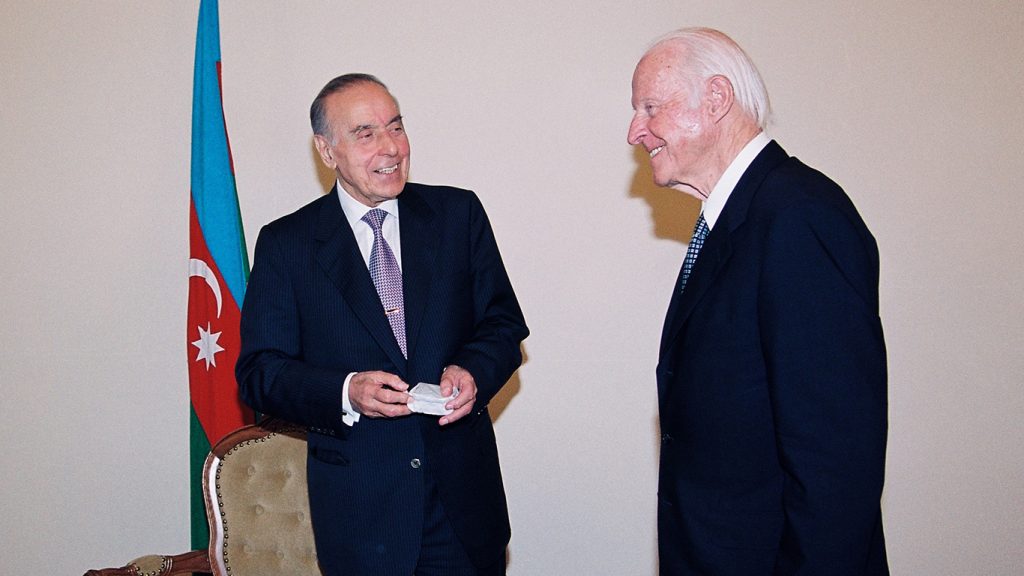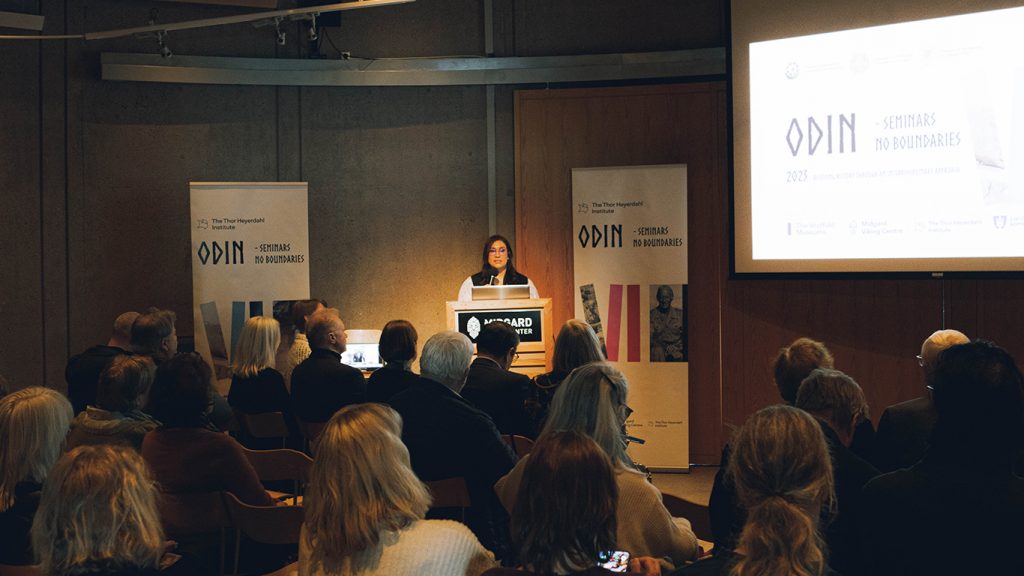By Ms. Shervin Najafpour, Chairwoman of the cultural bridge building organization CAN.
Born on the stunning coast of Norway, which is known for its rich Viking heritage, Thor Heyerdahl’s childhood home in Larvik had a breathtaking view of the open sea. As a child he would play by the water, but one day he experienced a horrible near drowning incident, and the fear of water had taken the boy, till he one day decided to sail across the Atlantic. So regardless of his fear of water he went on to achieve global renowned for his remarkable oceanic expeditions.
Outside of Norway’s borders, Thor Heyerdahl has left an indelible mark in history as a famous, admired and respected Norwegian adventurer and ethnographer who has conquered the hearts of millions through his bold expeditions and groundbreaking theories. At the same time, he is undoubtedly controversial, particularly in the scientific circle, still causing heated discussions even after passing in 2002.
Famed for his legendary Kon-Tiki expedition, Heyerdahl also ventured into the heart of the Turkic world to unravel the mysteries surrounding the origins of Odin, the revered Norse god of the Vikings.
In 1981, Thor Heyerdahl was invited by the President of Azerbaijan’s Academy of Sciences to see the famous petroglyphs of Gobustan. Once Thor Heyerdahl arrived in Gobustan, he was fascinated by the striking resemblances between the seafaring vessels depicted in the ancient rock carvings and the ships utilized by the intrepid Vikings.
An interesting fact we stumble by often whenever we search for Thor Heyerdahl and Azerbaijan, is his fascinations of exploring Gobustan’s musical heritage. Thor Heyerdahl is often seen pictured playing the Gaval Dash in Azerbaijani, which means “tambourine stone”. When this hefty two-meter-long stone is struck with smaller rocks, it makes a hollow, ringing sound. One of Gobustan’s most famous petroglyphs is thought to depict dancers taking part in Azerbaijan’s traditional Yalli dance, where participants are arranged in a circle or chain and dance holding hands or shoulders. Researchers theorizes that the Gaval Dash may have been used to make ritual sounds for these Yalli dancers. And next to this petroglyphs, are the cravings of the ships.
Once Thor Heyerdahl found confirmation in Snorri Sturluson’s medieval saga about Odin’s journey from the Caucasus, he started his Search for Odin which led him back to Azerbaijan. He embarked on multiple journeys to this region in 1994, 1999 and 2000, driven by a fervent desire to unravel the historical connections between the Nordic and Turkic cultures. Could it truly be that the Vikings had wandered from the Caucasus to Scandinavia?
But I remember from my childhood that the myths began with the God named Odin. From Odin it took 31 generations to reach the first historic king. The record of Odin says that he came to northern Europe from the land of Asers. I started reading these pages again, and saw that it was not mythology at all; it was history and geography. Thor Heyerdahl
As the search for Odin began, his hasty conclusion that the Vikings had ventured westward from Azerbaijan added a new chapter to the intertwined narratives of the Nordic and Turkic worlds, further illuminating the depth of historical connections between distant civilizations. Thor Heyerdahl was convinced that there might be connective links between the Caucasus and Scandinavia. He elaborated on these ideas in his book “Ingen Grenser” Norwegian for “No Borders”, published by J.M. Stenersens Forlag in Oslo in 1999. In his research he claimed that the Scandinavian God Odin was actually a historical figure who had originated from the Caucasus and then migrated with a large number of his people to Scandinavia and that Scandinavians are the descendants of the people who once lived in the region now known as Azerbaijan. The scientific circle though, didn’t approve of this theory, and harshly criticized Thor Heyerdahl.

Yet in Azerbaijan, this theory sowed the seeds of a beautiful friendship with the National Leader of Azerbaijan, Heydar Aliyev and fostered a strong bond between Norway and then the newly Independent Republic of Azerbaijan. Their shared passion for unraveling the mysteries of history became the cornerstone of a remarkable bond that transcended boundaries and fueled their collective pursuit of knowledge and cultural understanding. Thor Heyerdahl became the Honorary President of the Azerbaijan-Norway Friendship Society, which was estavlished by PhD. Guivami Rahimli who served as president of the Azerbaijan-Norway Friendship Society, which created bonds of cooperation between Azerbaijan and Norway across education, culture and business.
The friendship between Thor Heyerdahl and Heydar Aliyev became the inspiration for the “Discovering the Land of Our Origin” project by the cultural bridge building organization CAN, which aimed to uncover the similarities between Norway and Azerbaijan, honoring and celebrating their cultural ties.
As Thor Heyerdahl’s enduring legacy continues to inspire curiosity, exploration, and cross-cultural appreciation, a bust in the quaint village of Kish near Sheki, was raised in tribute to Heyerdahl’s profound influence on Azerbaijan. This monument stands as a timeless symbol of admiration and respect, honoring the eminent adventurer and immortalizing his remarkable legacy in the hearts of the Azerbaijani people. A legacy that will continue to inspire generations to come, beyond Norway’s borders.







